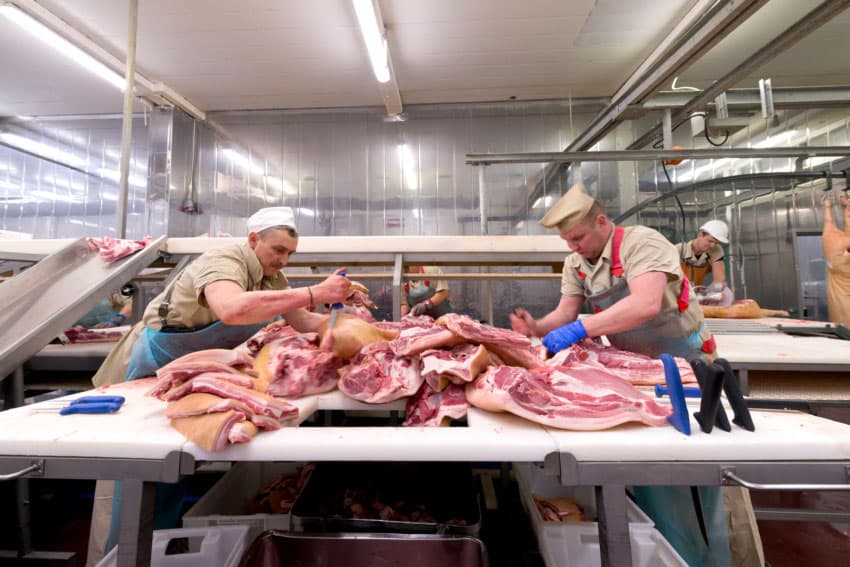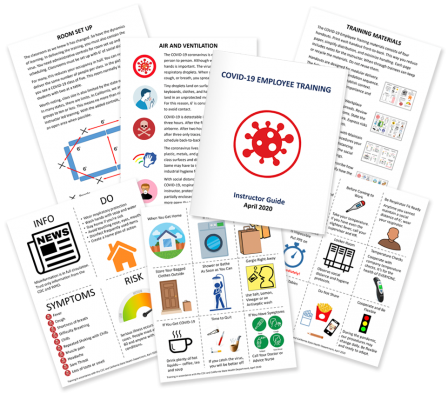With COVID-19 employee training social distance controls are a challenge.
Not everyone can work remotely during the pandemic. For manufacturing, construction, transportation, and critical infrastructure, labor must be onsite. To operate during the pandemic, organizations must practice social distance on-the-job.
When production fails to adjust, the meat packing industry experienced what happens. However, meatpackings’ failure to protect employees is not our topic. In this case, Wired already covered it. With the threat, workplace procedures must be reinforced by training and signage. For COVID-19 employee training social distance is foundational to sustainable operations.
SOCIAL DISTANCE IS NEW
Most certainly, social distance on-the-job is an ongoing challenge. Although social distance sounds “common sense,†it’s actually nonsensical. For example, we have all experienced a mask-hidden-smile after overstepping social distance. The smile signifies, “I just encroached on your social distance. Now what should I do?â€
The thought occurs because we lack a cultural point of reference. Throughout human evolution, history and society, social distance has no counterpart. To fully appreciate the employee training challenge, you must acknowledgement this realization. Consequently, social distance represents a behavioral change that is unnatural.
SOCIAL DISTANCE REQUIRES BEHAVIOR CHANGE
Moreover, workplace social distancing requires both behavioral and operational change. Similar to a successful diet, your entire routine must change. More accurately stated, social distancing is like the world on a diet. In this scenario, your entire daily routine changes along with everyone else’s. Like dieting, employees need re-enforcers, training, signage and support to be successful.
Most notably, employees need constant reminders, routine prompts, support and a goal. Similarly, this is the approach your COVID-19 employee must take too. For behavioral change, encouragement is never enough, because simply telling ain’t training. To sustain operations, lines must adjust, times should stagger, and PPE added. For behavioral change, you must first raise awareness.
To expect social distance without procedures and controls, aligns you with meatpackers. Wherever people interact train, post signage, and apply controls. This includes break rooms, copy rooms, smoking areas, and conference rooms. For starters, remove chairs and tape a six-foot barrier around desks. On production lines, stagger shifts, require face masks, shields, and spread out. For knowledge workers, allow them to work from home rather than cubes.
SOCIAL DISTANCE REQUIRES PROCEDURAL CHANGE
To maintain production levels during the pandemic, you must operate differently. For manufacturing operations, flexible work hours may represent challenges outside of consideration. In stead, think differently. Start by reducing the number of people on the floor. To do so, stagger start times, breaks, and shifts.
With time sensitive operations, there are dependencies and handoffs. For instance, operators need to be at their stations on queue. Drivers need to be at stops on schedule and employees must interact. To be successful, your COVID-19 employee training must address the implications.
SOCIAL DISTANCE ON-THE-JOB WORKS
Acknowledge social distancing disrupts workforce productivity and engagement. While reducing floor count helps, you must do more. If you have hot spots, re-engineer the procedure. Where you have choke points, change the process. When you can, add partitions and PPE. Create higher physical barriers to reduce respiratory spread. Require personal protective equipment, like, gloves, eye protection, face shields and masks.
With certainty, your social distancing controls determine how effectively you prevent the spread. Similar to hand washing, sustainable execution requires more than employee awareness. It signifies formidable behavioral change. Social distancing requires you to also change how to interact on-the-job. It takes ongoing critical thinking to ensure workforce safety, health, and productivity.
Act now to prevent COVID-19 in the workplace. Get ready with our proven COVID-19 Employee Training materials and Instructor Guide. Set up training with consideration for social distance, ventilation and PPE. Leverage single-use training materials. Prevention, hygiene, health and PPE it’s all there. Print and you’re ready to train. It’s a complete kit — Ready to go!


